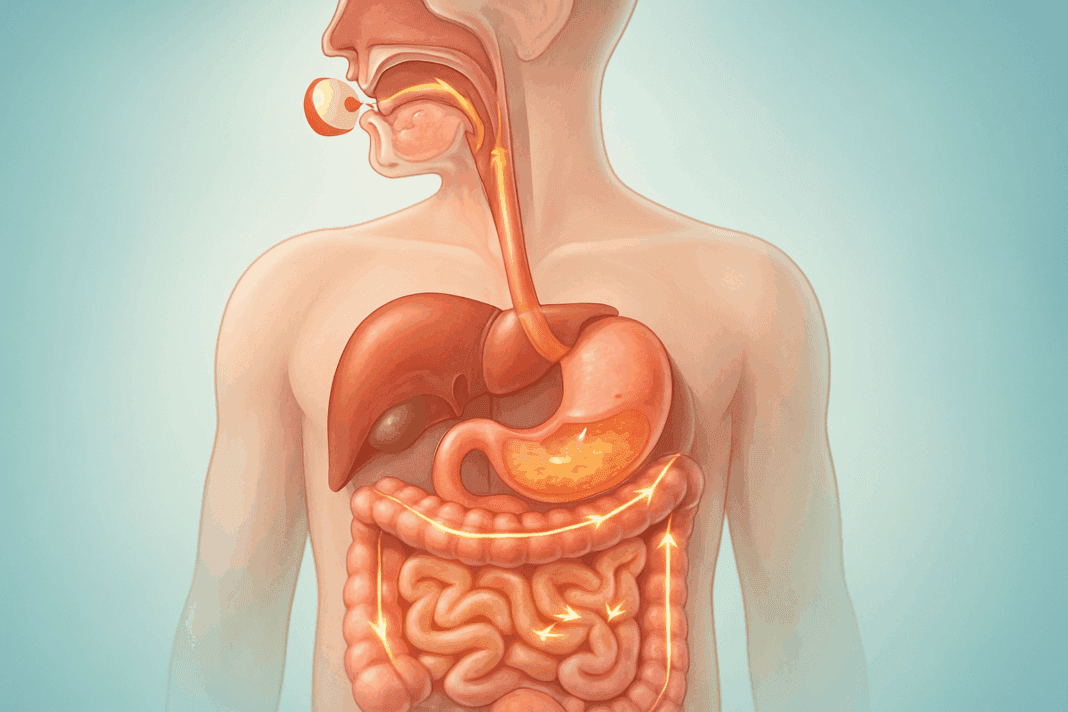The journey of food through the human digestive system is nothing short of extraordinary. Each bite begins a complex interplay of mechanical and chemical processes, all meticulously designed to extract nutrients essential for sustaining life. From the moment food enters the mouth to the point where microscopic nutrients are absorbed into the bloodstream, every stage is a testament to the body’s intricate engineering. For those curious about how the body turns molecules into usable energy, understanding how absorption in digestion works is key. This article explores not only the mechanical and chemical steps that fuel nutrient breakdown but also the vital mechanisms behind the movement of nutrients from the digestive tract into the capillaries, an essential process that supports every cellular function in the body.
You may also like: Macronutrients vs Micronutrients: What the Simple Definition of Macronutrients Reveals About Your Diet and Health
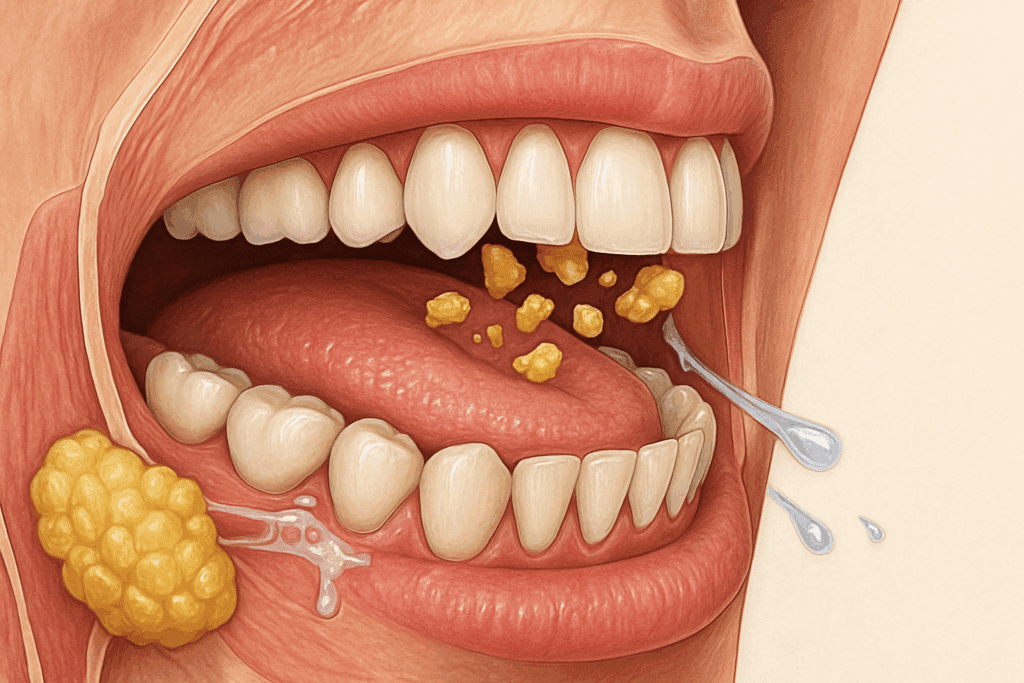
Where Does Mechanical Digestion Begin?
The process of digestion begins the moment food enters the mouth. It is here, in the oral cavity, that mechanical digestion officially takes root. When we ask, “Where does mechanical digestion begin?” the answer lies in the simple yet vital act of chewing. Teeth grind and tear food into smaller particles, increasing the surface area available for enzymes to act upon. This preparatory stage ensures that the chemical processes that follow can proceed with maximum efficiency. Salivary glands also contribute by secreting saliva, which moistens food and contains enzymes like amylase that begin the breakdown of carbohydrates.
Mechanical digestion doesn’t end in the mouth. Once the food bolus is swallowed, it travels down the esophagus and enters the stomach, where muscular contractions known as peristalsis further aid in breaking down food. The stomach’s churning movements mix the food with gastric juices, creating a semi-liquid substance called chyme. The stomach’s strong muscular walls and rhythmic contractions exemplify mechanical digestion at a deeper level, working in tandem with enzymatic activity to process food into an absorbable form. Understanding where mechanical digestion begins is essential to grasp the continuum of the digestive process. It highlights that even the simplest actions, such as chewing, play a crucial role in nutrient assimilation.
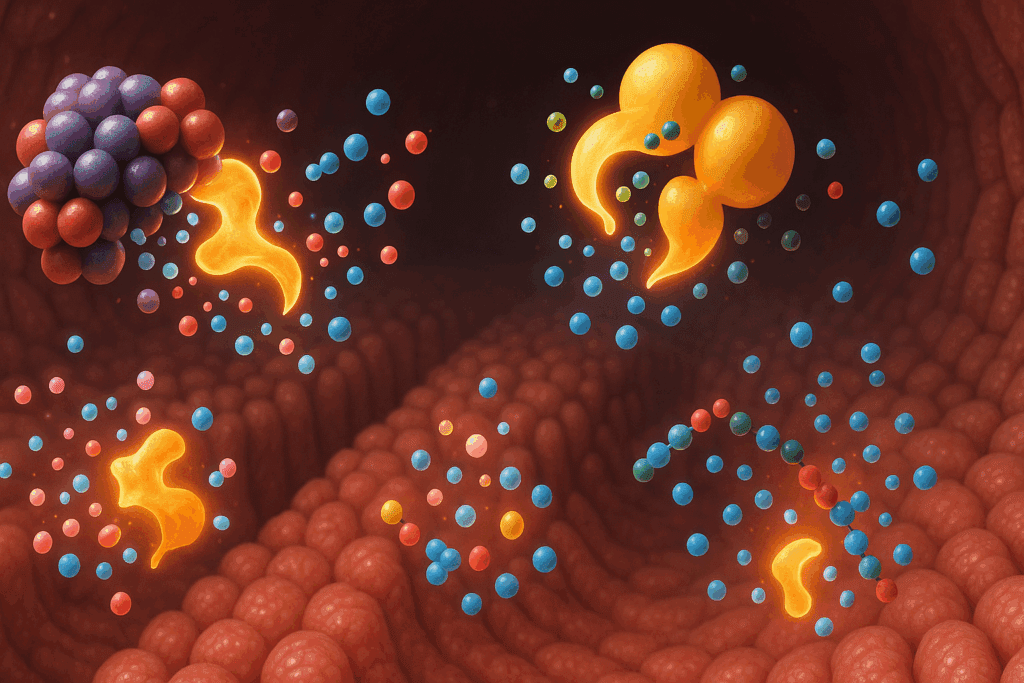
What’s the Digestion of Molecules Really About?
To fully comprehend digestion, one must ask: what’s the digestion of molecules all about? At its core, it’s the transformation of complex macromolecules—carbohydrates, proteins, and fats—into their monomeric forms. Carbohydrates are broken down into simple sugars like glucose; proteins are dismantled into amino acids; and fats become glycerol and fatty acids. This molecular deconstruction is essential because only small, individual molecules can cross the epithelial lining of the small intestine and enter the bloodstream.
Enzymatic digestion complements mechanical efforts by catalyzing specific biochemical reactions. Amylase, protease, and lipase, produced in the salivary glands, stomach, pancreas, and small intestine, each play a role in digesting their respective substrates. The small intestine, especially the duodenum, is a central hub for this enzymatic breakdown. Bile, produced by the liver and stored in the gallbladder, emulsifies fats, making them more accessible to digestive enzymes. The importance of this phase cannot be overstated. Without molecular digestion, absorption in digestion would not be possible, as the body cannot take in large, undigested molecules.
Beyond the biochemistry, digestion at the molecular level is influenced by numerous factors: enzyme concentrations, pH levels, gastrointestinal motility, and even psychological states such as stress. Research continues to uncover how gut health, microbiota diversity, and genetic predispositions affect the efficiency of this phase. Understanding what’s the digestion of molecules involves reveals just how finely tuned our internal systems are and underscores the need for balanced diets to support optimal digestive enzyme activity.
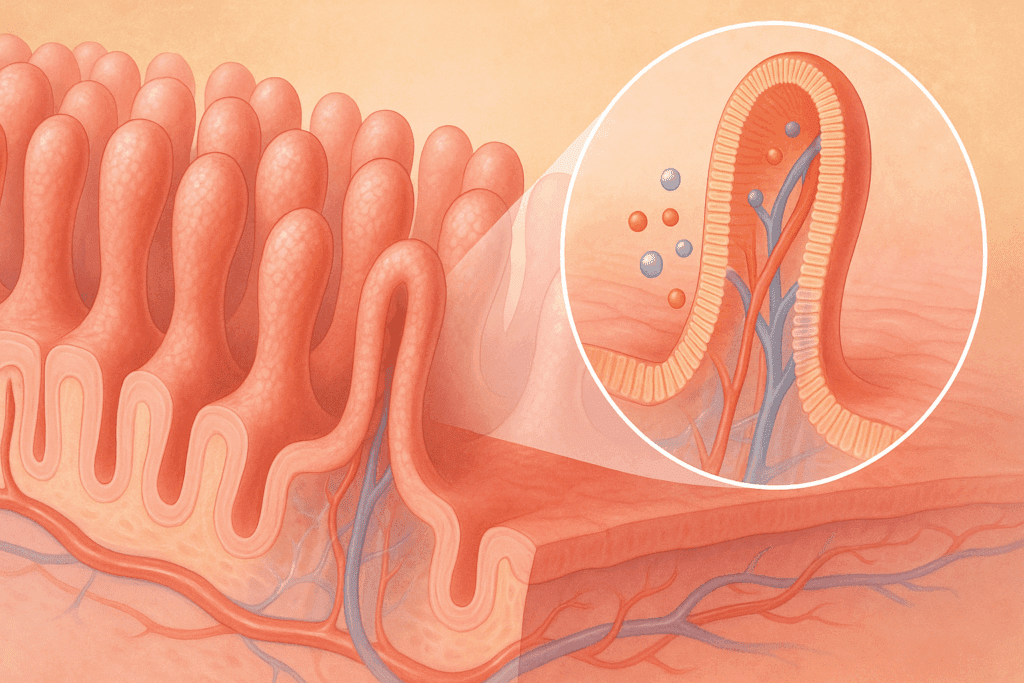
The Absorptive Role of the Small Intestine
Once the food has been broken down into absorbable molecules, the spotlight shifts to the small intestine—particularly the jejunum and ileum. This region of the digestive tract is where the majority of nutrient absorption takes place. The lining of the small intestine is covered in villi and microvilli, tiny hair-like structures that dramatically increase surface area, making absorption more efficient. These structures create an expansive interface for the movement of nutrients from the digestive tract into the capillaries, a crucial step in nourishing the body.
Absorption in digestion is an elegant dance between passive diffusion, active transport, and facilitated diffusion. Water-soluble nutrients such as glucose, amino acids, and water-soluble vitamins are absorbed directly into the blood capillaries. Fat-soluble nutrients, on the other hand, are first incorporated into micelles and then into chylomicrons before being transported via the lymphatic system. This complex, highly regulated system ensures that each type of nutrient follows its proper route, minimizing waste and maximizing utility.
Capillaries located in the villi play a central role in this absorptive process. They serve as the first point of entry for many nutrients into the systemic circulation. The movement of nutrients from the digestive tract into the capillaries is not merely a physical process; it involves a host of transport proteins, electrochemical gradients, and cellular signaling pathways that guide the precise allocation of resources. This nuanced system highlights the importance of maintaining a healthy intestinal lining and balanced gut flora to support efficient nutrient uptake.
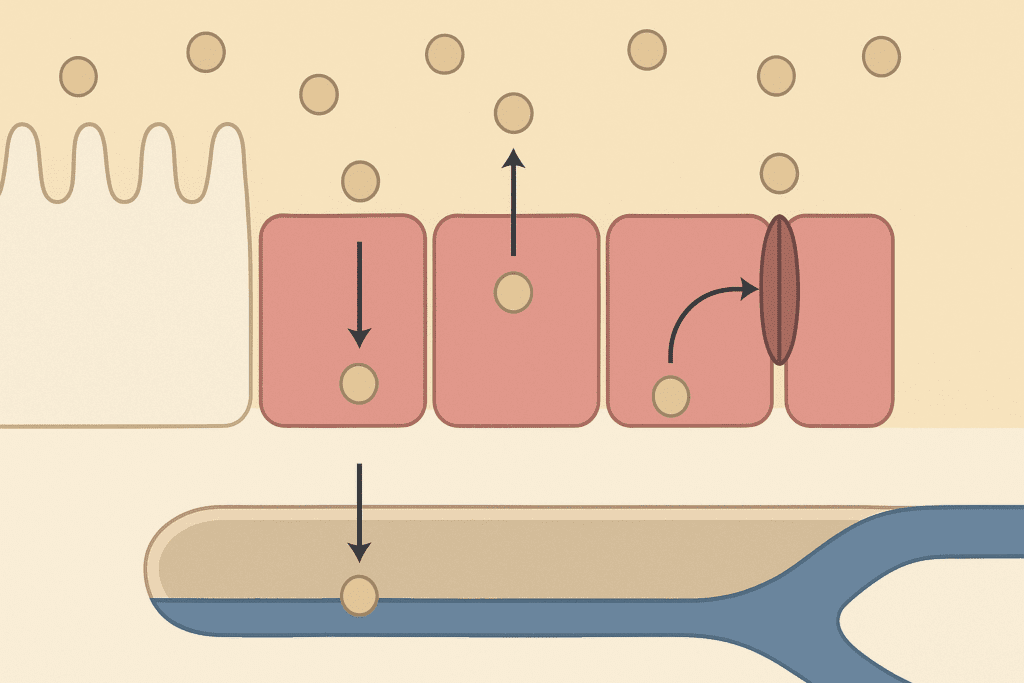
How Nutrients Move Into the Bloodstream
The question of how nutrients move into the bloodstream opens the door to a detailed exploration of human physiology. Once absorbed by the intestinal cells, nutrients pass through the basal membrane into the capillary network housed within each villus. From here, the nutrients enter the hepatic portal vein, a critical vessel that transports nutrient-rich blood to the liver for further processing. This is where the movement of nutrients from the digestive tract into the capillaries connects directly with systemic health, as the liver serves as the metabolic gatekeeper for nutrient distribution.
This transition from intestinal cells to capillaries is governed by a variety of mechanisms. Passive transport allows certain nutrients to move along a concentration gradient without requiring energy, while active transport mechanisms utilize ATP to move substances against a gradient. Facilitated diffusion lies between these two, using protein channels to allow larger or charged molecules to pass. These pathways are fine-tuned by cellular needs and nutrient availability, ensuring optimal efficiency.
Moreover, some nutrients require co-transporters or binding proteins for absorption and mobilization. For instance, the absorption of vitamin B12 is contingent upon intrinsic factor, a protein secreted by the stomach lining. Iron absorption, too, is influenced by the presence of other dietary components such as vitamin C, which enhances its bioavailability. This underscores the interconnected nature of nutrient metabolism and highlights how even trace deficiencies can affect the entire absorption process. As such, understanding how nutrients move into the bloodstream is not just a matter of anatomical function—it’s a window into the sophisticated orchestration of human biology.

Digestive Health and Nutrient Efficiency
The efficiency of absorption in digestion depends heavily on the health of the gastrointestinal system. Conditions such as celiac disease, Crohn’s disease, and irritable bowel syndrome can damage the intestinal lining, reducing the body’s ability to absorb essential nutrients. These disorders often result in symptoms like fatigue, malnutrition, and gastrointestinal discomfort, all of which reflect disruptions in the movement of nutrients from the digestive tract into the capillaries. Maintaining gut health is thus essential not only for comfort but also for the prevention of systemic health issues.
A balanced diet rich in fiber, prebiotics, and probiotics supports the structural and functional integrity of the digestive system. Fiber aids in regulating bowel movements and supports microbial diversity, while prebiotics and probiotics help maintain a healthy balance of gut bacteria. These microorganisms play a pivotal role in breaking down complex compounds and synthesizing essential vitamins like K and certain B vitamins. They also influence the immune system, inflammation levels, and even mood, further emphasizing the systemic reach of digestive efficiency.
Another critical factor is hydration. Water facilitates the movement of digested food through the intestines, supports enzyme activity, and aids in the dissolution and transport of nutrients. Without adequate hydration, digestive transit can slow, leading to constipation and reduced nutrient absorption. Physical activity, stress management, and avoidance of inflammatory foods also contribute to optimal digestive function. Together, these lifestyle factors form the foundation of a healthy digestive system capable of maximizing the absorption of dietary nutrients.
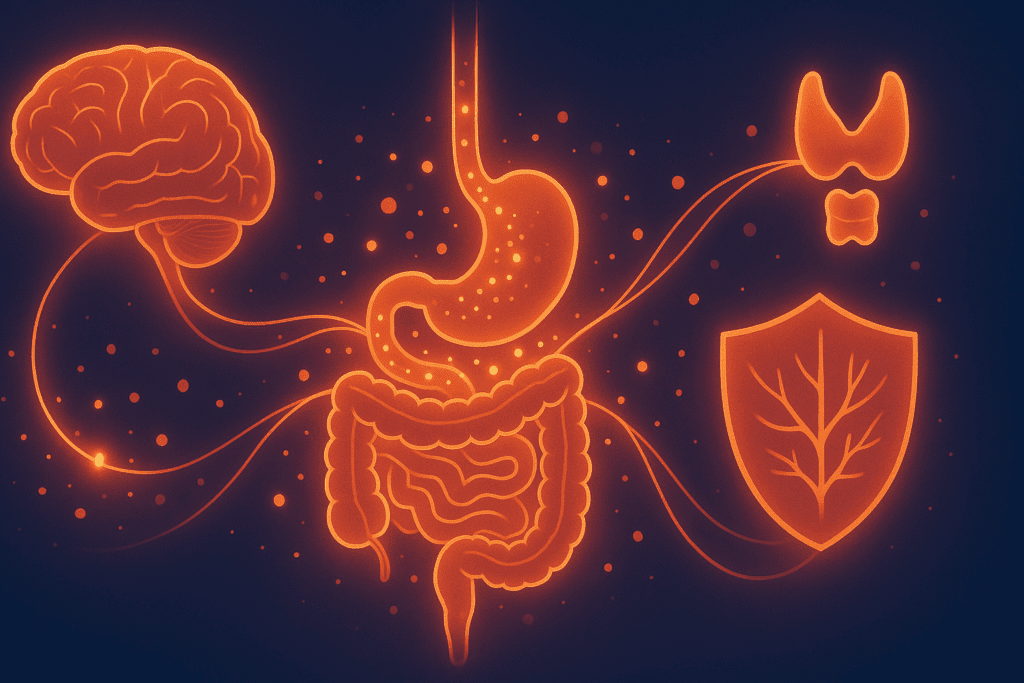
The Interplay Between Digestion and Systemic Health
The significance of absorption in digestion extends far beyond the gut. Every system in the body—from the cardiovascular and endocrine systems to the immune and neurological networks—relies on the successful extraction and transport of nutrients. Poor absorption can lead to deficiencies in essential vitamins and minerals, which in turn may manifest as fatigue, weakened immunity, or cognitive impairments. This highlights the critical importance of understanding what’s the digestion of molecules and how the movement of nutrients from the digestive tract into the capillaries underpins holistic health.
The gut-brain axis, for example, illustrates the intimate connection between digestive health and mental well-being. Nutrients like tryptophan, a precursor to serotonin, must be properly absorbed for mood regulation. Similarly, omega-3 fatty acids, absorbed in the small intestine, are essential for maintaining the structural integrity of brain cells. If these or other nutrients are not adequately absorbed, neurological function can suffer. As such, disruptions in digestive function are increasingly being implicated in mood disorders and neurodegenerative diseases.
Additionally, the liver’s role in metabolizing and storing nutrients post-absorption is crucial for hormonal balance, detoxification, and energy regulation. Once nutrients enter the bloodstream, they do not act independently but participate in a web of metabolic pathways that sustain life. From ATP production to protein synthesis and immune response, every physiological process depends on efficient digestion and absorption. Thus, a healthy digestive system serves as the cornerstone of systemic wellness.
Supporting Optimal Nutrient Absorption Through Diet
To support the natural process of nutrient absorption, dietary strategies must be both diverse and deliberate. Eating a wide range of colorful fruits and vegetables ensures a broad spectrum of vitamins, minerals, and phytonutrients. Whole grains, legumes, nuts, and seeds provide essential fiber, which helps maintain gut motility and microbial health. These foods not only aid in digestion but enhance the surface area and efficiency of absorption by supporting the structure of the intestinal lining.
Including fermented foods like yogurt, kefir, kimchi, and sauerkraut introduces beneficial bacteria into the gut, which can improve digestive efficiency and nutrient assimilation. These foods also support the breakdown of complex molecules, making it easier for the body to complete the absorption phase. Lean proteins, particularly those rich in essential amino acids, support tissue repair and enzyme production—both of which are necessary for effective digestion and absorption.
Avoiding processed foods, excessive sugar, and artificial additives can also protect the intestinal lining from inflammation and disruption. Chronic exposure to such compounds may compromise the villi and microvilli, impairing the movement of nutrients from the digestive tract into the capillaries. Additionally, mindful eating practices, such as thoroughly chewing food and eating in a relaxed state, can enhance mechanical digestion and stimulate enzymatic activity. Together, these strategies create an internal environment conducive to optimal nutrient uptake and systemic health.
Frequently Asked Questions: How Absorption in Digestion Works and the Journey of Nutrients to the Bloodstream
1. How does emotional stress affect absorption in digestion and nutrient movement into the bloodstream?
Emotional stress has a profound yet often overlooked impact on absorption in digestion. Stress triggers the sympathetic nervous system, shifting the body into a ‘fight or flight’ mode that deprioritizes digestive efficiency. This redirection of blood flow away from the gastrointestinal tract can delay peristalsis, alter enzyme secretion, and compromise the integrity of the intestinal lining. As a result, the movement of nutrients from the digestive tract into the capillaries becomes slower and less efficient, particularly under chronic stress conditions. What’s often underestimated is how ongoing psychological stress may even contribute to intestinal permeability, or “leaky gut,” which further impairs both nutrient absorption and systemic health.
2. Are there specific times of day when absorption in digestion is more efficient?
Emerging chrononutrition research suggests that the timing of meals can influence how effectively the body processes and absorbs nutrients. Early in the day, digestive enzymes and gastrointestinal motility tend to be more active, which may enhance the overall efficiency of absorption in digestion. Additionally, hormonal cycles—such as insulin sensitivity and gastric acid production—fluctuate throughout the day, making morning and early afternoon ideal for larger meals. These fluctuations can directly affect the movement of nutrients from the digestive tract into the capillaries. For individuals looking to maximize nutrient uptake, aligning meal timing with circadian rhythms may offer measurable benefits.
3. Can certain medications interfere with the digestion of molecules and subsequent nutrient absorption?
Yes, many common medications can interfere with what’s the digestion of molecules and how effectively nutrients are absorbed afterward. Proton pump inhibitors, for example, reduce stomach acid necessary for the digestion of proteins and the activation of certain enzymes. Antibiotics can disrupt the gut microbiota, affecting the breakdown and fermentation of complex carbohydrates and the synthesis of B vitamins. Moreover, some cholesterol-lowering drugs and diuretics can alter the movement of nutrients from the digestive tract into the capillaries by affecting bile production or mineral transport channels. Understanding potential medication-nutrient interactions is essential for preventing malabsorption and related deficiencies.
4. How do food combinations influence the digestion of molecules and nutrient bioavailability?
The way we combine foods can greatly affect what’s the digestion of molecules and how nutrients are absorbed. For instance, pairing vitamin C-rich foods with iron sources enhances iron absorption by transforming it into a more bioavailable form. Conversely, consuming calcium-rich foods alongside iron can inhibit iron uptake due to competition at the intestinal transport sites. Fats aid in the absorption of fat-soluble vitamins, while fiber may delay the movement of nutrients from the digestive tract into the capillaries by slowing transit time. Thoughtful meal composition not only supports absorption in digestion but can also enhance the body’s ability to utilize nutrients more effectively.
5. What role does the microbiome play in supporting nutrient absorption?
The gut microbiome is integral to absorption in digestion, acting as both a facilitator and regulator. Microbes in the colon help ferment indigestible fibers, producing short-chain fatty acids that nourish colonocytes and maintain mucosal health. This in turn optimizes the movement of nutrients from the digestive tract into the capillaries by preserving the structural integrity of the intestinal lining. Additionally, certain bacterial strains synthesize vitamins such as B12 and K2, making them more readily available for absorption. An imbalanced microbiome, often caused by poor diet or antibiotic use, can disrupt enzyme activity and impair what’s the digestion of molecules, leading to suboptimal nutrient uptake.
6. How does aging affect the body’s ability to absorb nutrients efficiently?
As we age, multiple physiological changes collectively reduce the efficiency of absorption in digestion. Gastric acid production often declines, which can impair the digestion of molecules such as protein and the release of minerals like calcium and magnesium. Age-related thinning of the intestinal lining and reduced enzyme secretion also compromise the movement of nutrients from the digestive tract into the capillaries. Moreover, older adults are more likely to have medical conditions or take medications that interfere with digestive function. Regular nutritional assessments and potential supplementation are recommended to mitigate age-related declines in nutrient absorption.
7. Can intense physical exercise influence digestive efficiency and nutrient absorption?
Surprisingly, high-intensity physical activity can temporarily impair absorption in digestion, particularly if food is consumed close to a workout. During exercise, blood is diverted away from the gut to support muscles and cardiovascular function, which may delay the movement of nutrients from the digestive tract into the capillaries. Additionally, gastrointestinal motility may be altered during vigorous physical exertion, affecting how completely food is broken down and absorbed. However, over the long term, moderate regular exercise enhances circulation and can improve overall digestive tone and efficiency. Timing meals appropriately around exercise sessions is key to maintaining optimal digestion of molecules and nutrient delivery.
8. What are the signs of impaired nutrient absorption, and how are they diagnosed?
Symptoms of impaired absorption in digestion can be subtle or severe, depending on which nutrients are affected. Fatigue, brittle nails, cognitive fog, and frequent illness may all point to deficiencies resulting from poor nutrient uptake. Diagnostic tools include stool tests to assess fat content, blood tests for micronutrient levels, and breath tests to evaluate bacterial overgrowth. When absorption issues are suspected, it’s important to investigate not only what’s the digestion of molecules looks like but also whether the movement of nutrients from the digestive tract into the capillaries is functioning properly. A comprehensive workup often includes reviewing diet, lifestyle, medication use, and gastrointestinal health.
9. How can emerging technologies improve our understanding of nutrient absorption?
Advanced technologies like capsule endoscopy, metabolomics, and AI-driven gut microbiome mapping are revolutionizing how we study absorption in digestion. These innovations allow clinicians and researchers to observe the real-time breakdown and transport of nutrients, offering unprecedented insights into what’s the digestion of molecules under various physiological conditions. For instance, wearable biosensors can now detect glucose and amino acid levels in near real-time, linking nutrient intake directly with bioavailability outcomes. These tools also help visualize how the movement of nutrients from the digestive tract into the capillaries varies between individuals. As personalized nutrition advances, these technologies will play a key role in optimizing health through tailored dietary strategies.
10. Are there genetic factors that influence where mechanical digestion begins and how well nutrients are absorbed?
Genetic variability can significantly influence both where mechanical digestion begins to become less efficient and how well different individuals absorb nutrients. For example, mutations in genes affecting lactase production can impair dairy digestion at the enzymatic level, despite normal mechanical processing in the mouth and stomach. Variants in genes responsible for enzyme production, intestinal transport proteins, or microbiome composition can affect the digestion of molecules and the movement of nutrients from the digestive tract into the capillaries. Some individuals may even be predisposed to faster or slower transit times, altering the duration nutrients are exposed to absorptive surfaces. These differences underscore the potential of nutrigenomics—using DNA data to guide personalized dietary recommendations for optimized digestion and absorption.
Conclusion: Why Understanding Digestion and Nutrient Absorption Matters for Long-Term Health
Understanding how absorption in digestion works—and more specifically, where mechanical digestion begins and how nutrients move into the bloodstream—offers vital insight into the intricate systems that sustain human life. The digestion of molecules is not a passive process but a dynamic, highly regulated sequence of events that depends on proper mechanical preparation, enzymatic breakdown, and cellular transport mechanisms. Each stage, from the first bite to the absorption of nutrients into capillaries, plays a decisive role in determining how well our bodies can access and utilize the nutrients we consume.
Moreover, the movement of nutrients from the digestive tract into the capillaries is foundational to every physiological process. Whether fueling muscle contractions, regulating hormones, or supporting immune defenses, properly absorbed nutrients are the silent drivers of well-being. Disruptions in this process—due to poor diet, stress, disease, or dehydration—can have cascading effects across multiple systems. Therefore, investing in digestive health is not just about avoiding discomfort but about fortifying the entire body.
By acknowledging where mechanical digestion begins and appreciating what’s the digestion of molecules truly entails, individuals can make more informed dietary and lifestyle choices. In doing so, they not only enhance the quality of their digestion but lay the groundwork for long-term vitality and disease prevention. In essence, good health doesn’t start in the doctor’s office—it begins in the gut, where every molecule matters, and every absorbed nutrient fuels the body’s potential.
Further Reading:
Chemical Digestion and Absorption: A Closer Look


